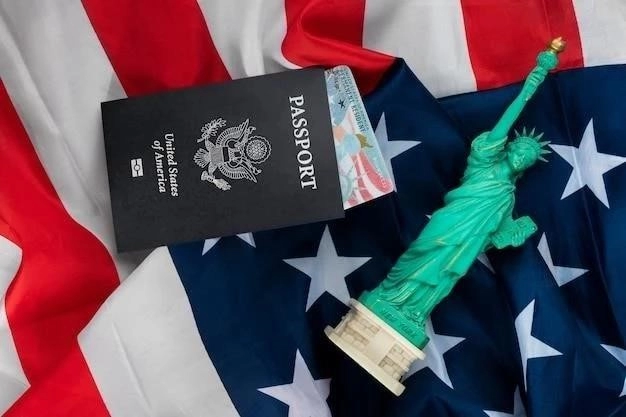Early Immigration (1607-1783)
The first English settlers arrived in Virginia in 1607, marking the beginning of large-scale European immigration to the territory that would become the United States. Early colonists were driven by a mix of economic opportunity, religious freedom, and forced migration, with indentured servitude a common practice. By the 1700s, waves of German and Scotch-Irish immigrants arrived, settling primarily in Pennsylvania and the Carolinas. This period saw the tragic growth of the transatlantic slave trade, forcibly bringing hundreds of thousands of Africans to America. By 1775, the colonies were a diverse mix of ethnicities and religions, laying the groundwork for a nation built on immigration.
Colonial Immigration Laws and Patterns
The colonial era (1607-1775) witnessed the initial formation of immigration patterns and legal frameworks that would later shape the United States’ approach to newcomers. While the concept of a unified immigration policy was nonexistent, colonies developed distinct practices based on their economic needs, religious beliefs, and social anxieties.
Driven by labor shortages, many colonies actively encouraged immigration. Land grants and promises of religious tolerance, particularly in Pennsylvania and Maryland, attracted European Protestants seeking new beginnings. The Virginia Company, established in 1606, actively recruited English settlers through the headright system, offering 50 acres of land to anyone who paid for the passage of an indentured servant.
However, this era also witnessed early forms of immigration restriction. Concerns about religious homogeneity led to conflicts. In 1637, the Massachusetts Bay Colony, wary of dissenting faiths, ordered that no town could accept individuals without permission from authorities. This reflected a desire to maintain religious and social cohesion.
Furthermore, colonial authorities grappled with the consequences of indentured servitude and the transatlantic slave trade. Indentured servants, primarily of European origin, gained freedom after a period of service. However, the importation of enslaved Africans, tragically escalating by the late 17th century, introduced a system of forced migration based on race and exploitation. By 1700, nearly 27,500 enslaved Africans lived in the colonies, highlighting the complex and often inhumane dynamics of colonial labor needs.
The colonial period also witnessed attempts to regulate immigration through legislation, laying the groundwork for future federal policies. In 1727, Pennsylvania imposed a tax on incoming ship passengers to discourage the arrival of the poor and those deemed undesirable. Similarly, the 1740 Plantation Act, enacted by the British Parliament, served as a model for subsequent U.S. naturalization acts, illustrating the evolving legal approach to immigration and citizenship.
In conclusion, the colonial era reveals a complex interplay between attracting newcomers for economic growth and imposing limitations based on religious, social, and racial factors. The period’s immigration patterns, shaped by labor demands, religious tolerance, and the horrors of slavery, laid the foundation for the nation’s ongoing struggle to define its identity as a land of opportunity while grappling with the challenges of diversity and inclusion.

The Impact of the American Revolution
The American Revolution (1775-1783) ushered in a new era for immigration to the newly formed United States. While the war itself caused a temporary decline in immigration, the ideals enshrined in the Declaration of Independence—liberty, equality, and the pursuit of happiness—held a powerful allure for people around the world seeking a fresh start and escape from oppression.
The nascent nation, eager to populate its vast territories and build a strong economic foundation, generally welcomed newcomers. However, the revolution also ignited debates about national identity and who should be included in the newly formed republic. The Articles of Confederation (1781-1788) left matters of citizenship and naturalization to individual states, leading to a patchwork of regulations and reflecting the ongoing tension between a welcoming stance and concerns about the potential impact of foreigners.
The end of British rule brought about significant changes. Loyalist colonists who had supported the crown often fled to Canada or back to England, reshaping demographics in certain regions. Conversely, the war also opened up opportunities for those who had fought for American independence. For example, many German soldiers who served in the Hessian regiments chose to stay in America after the war, contributing to the nation’s growing diversity.
The revolution’s ideological impact extended to the issue of slavery. While the institution remained deeply entrenched, particularly in the South, the ideals of liberty and equality fueled the abolitionist movement. This period saw the first significant wave of manumissions, with some enslaved Africans gaining freedom through service in the Continental Army or through individual acts of emancipation by slaveholders influenced by revolutionary ideals.
Despite its promise of freedom and opportunity, the post-Revolution era also revealed challenges in reconciling lofty ideals with social realities. The Naturalization Act of 1790, while marking a step towards a unified immigration policy, limited naturalized citizenship to “free white persons,” excluding indentured servants, slaves, and other racial groups. This act laid bare the contradictions inherent in the nation’s founding, highlighting how concepts of race and inclusion would continue to shape immigration policy for generations to come.
In summary, the American Revolution, while temporarily disrupting immigration flows, ultimately served as a catalyst for reshaping the nation’s approach to newcomers. The war’s end brought about new opportunities and challenges, as the newly established nation grappled with defining its identity and balancing its commitment to liberty with the complexities of integrating a diverse population. The seeds of both a welcoming spirit and a legacy of exclusion were sown in this pivotal period, setting the stage for the ongoing evolution of immigration in the United States.

19th Century Immigration (1784-1900)
The 19th century witnessed an unprecedented surge in immigration to the United States, transforming the nation’s demographics, culture, and economy. Driven by a complex interplay of factors, including political upheavals in Europe, industrialization, and the allure of new opportunities, millions of people crossed the Atlantic in search of a better life. This era saw a shift in the origins of immigrants, with a dramatic increase in arrivals from Southern and Eastern Europe towards the end of the century.
The early decades of the 19th century saw a steady influx of immigrants, primarily from Ireland, Germany, and Great Britain. The Irish potato famine of the 1840s, in particular, forced millions to flee their homeland, with many seeking refuge in the United States. These immigrants often faced hardship and discrimination, with competition for jobs and housing fueling social tensions. Nativist sentiments began to rise, manifesting in anti-immigrant organizations and political movements that viewed newcomers with suspicion and prejudice.
The expansion of the United States westward, fueled by the discovery of gold in California and the Homestead Act of 1862, further stimulated immigration. The construction of the transcontinental railroad, completed in 1869, relied heavily on immigrant labor, particularly from China and Ireland. The Chinese, facing persecution and economic hardship in their homeland, found work on the railroads and in other industries, but they encountered intense prejudice and discriminatory legislation, culminating in the Chinese Exclusion Act of 1882.
The latter half of the 19th century saw the rise of industrialization and urbanization in the United States, creating a huge demand for labor in factories and mines. This period witnessed the arrival of millions of immigrants from Southern and Eastern Europe, including Italians, Poles, Russians, and Jews fleeing religious persecution. These new immigrants, often unskilled and accustomed to different cultures and languages, crowded into tenement housing in rapidly growing cities, facing harsh working conditions and social challenges as they struggled to assimilate.
The surge in immigration throughout the 19th century presented the United States with both opportunities and challenges. Immigrants contributed significantly to the nation’s economic growth, providing a vital source of labor and entrepreneurial spirit. However, their arrival also fueled social anxieties about cultural change, economic competition, and the very definition of American identity. The 19th century laid the groundwork for the complex and often contentious debates about immigration that would continue to shape the nation’s history in the 20th century and beyond.
Major Waves of Immigration: Irish, German, and Chinese
The 19th century saw the United States transformed by massive waves of immigration, with the Irish, German, and Chinese communities leaving an indelible mark on the nation’s cultural tapestry and contributing significantly to its economic expansion. Each group, however, faced unique challenges and discriminatory practices as they navigated their place in American society.
The Irish, fleeing the devastating potato famine of the 1840s and seeking refuge from British rule, comprised the largest group of immigrants during this period. Arriving impoverished and often unskilled, they faced intense prejudice and discrimination, fueled by anti-Catholic sentiment and stereotypes of the Irish as lazy and prone to crime. They crowded into urban slums, taking on low-wage jobs in factories, construction, and domestic service, forming the backbone of the burgeoning industrial workforce.
German immigrants, the second largest group, arrived seeking economic opportunity and fleeing political unrest in the wake of the failed 1848 revolutions. Possessing diverse skills and trades, they established themselves in agriculture, commerce, and skilled crafts. While facing less overt discrimination than the Irish, they encountered prejudice based on their language and cultural practices. Their contributions to American brewing, music, and education remain significant.
The Chinese, driven by poverty and lured by the promise of gold and work on the transcontinental railroad, arrived primarily on the West Coast. They faced intense hostility and racism, fueled by economic anxieties and xenophobic fears of their cultural differences. Subject to discriminatory laws like the Foreign Miners Tax and the Chinese Exclusion Act of 1882, which barred Chinese laborers from entering the country and denied them citizenship, they endured segregation, violence, and exploitation. Despite these hardships, they persevered, building communities and contributing to the growth of the West Coast economy.
The experiences of Irish, German, and Chinese immigrants during the 19th century highlight the complex interplay of economic opportunity, social tension, and discriminatory practices that shaped the American immigration experience. While each group faced unique challenges, their resilience, contributions, and cultural imprint indelibly shaped the nation’s evolving identity.

The Rise of Nativism and Anti-Immigrant Sentiment
The 19th century witnessed a dramatic surge in immigration to the United States, bringing with it not only economic and cultural transformations but also a potent wave of nativism and anti-immigrant sentiment. This backlash against newcomers, fueled by a complex interplay of economic anxieties, religious prejudices, and racial theories, significantly shaped the nation’s social and political landscape.
The arrival of millions of Irish Catholics in the mid-19th century sparked intense anti-Catholic sentiment among the predominantly Protestant population. Nativists viewed Catholicism as a threat to American values and institutions, spreading fears of papal influence and undermining democratic ideals. This prejudice manifested in discriminatory hiring practices, social ostracism, and even violence against Irish communities.
As industrialization gained momentum, labor competition intensified, fueling economic anxieties among native-born workers. Immigrants, often willing to work for lower wages and endure harsh conditions, were accused of stealing jobs and depressing wages, igniting resentment and hostility. The rise of labor unions, while advocating for workers’ rights, sometimes also reflected nativist sentiments, with some unions excluding immigrants or demanding restrictions on immigration to protect American jobs.
The latter half of the 19th century saw the emergence of pseudo-scientific theories of race, which fueled xenophobia and prejudice against immigrants from Southern and Eastern Europe. These new immigrants, often Jewish or Catholic, faced discrimination based on their perceived racial inferiority and were stereotyped as criminals, anarchists, or carriers of disease. This period saw the rise of anti-immigrant organizations like the American Protective Association, which actively campaigned for immigration restrictions based on race and religion.
The surge in nativism and anti-immigrant sentiment during the 19th century had a profound impact on American society, shaping political discourse, social attitudes, and ultimately, immigration policy. This era serves as a stark reminder of the challenges of assimilation and inclusion, demonstrating how economic anxieties, religious prejudices, and racial theories can combine to create a climate of fear and exclusion, undermining the nation’s commitment to welcoming newcomers.
Immigration Legislation and its Effects
The 19th century witnessed a dramatic shift in U.S. immigration policy, transitioning from a relatively open-door approach to a more restrictive system shaped by growing nativism and economic anxieties. This period saw the enactment of significant legislation aimed at regulating the flow of newcomers and, in some cases, explicitly excluding certain groups based on race, nationality, or perceived undesirability.
Early immigration legislation primarily focused on regulating passenger ships and addressing public health concerns. The Steerage Act of 1862, for instance, sought to improve the horrific conditions on transatlantic voyages, which often carried impoverished immigrants in overcrowded and unsanitary spaces. However, as anti-immigrant sentiment intensified, legislation took on a more exclusionary character.
The Page Act of 1875, targeting Chinese women specifically, barred the entry of individuals deemed “undesirable” or likely to become a public charge. This act, rooted in racist stereotypes and fears of prostitution, marked a significant escalation in discriminatory immigration policy, setting the stage for further restrictions targeting the Chinese.
The Chinese Exclusion Act of 1882, a landmark piece of legislation, marked a turning point in U.S. immigration history. This act, fueled by economic anxieties and blatant racism, banned Chinese laborers from entering the country and denied citizenship to those already residing in the United States. It marked the first time the U.S. government implemented a policy of exclusion based solely on nationality and ethnicity, establishing a precedent for future discriminatory legislation.
The late 19th and early 20th centuries saw the passage of additional laws aimed at restricting immigration, including literacy tests and head taxes, aimed at limiting the influx of Southern and Eastern Europeans deemed less desirable by the predominantly Anglo-Saxon Protestant establishment. These laws reflected a growing belief in scientific racism and the perceived threat of “undesirable” immigrants to American culture and society.
The impact of 19th-century immigration legislation was profound and far-reaching. It reshaped the demographic landscape of the nation, creating hardship for excluded groups and contributing to a climate of fear and discrimination. This period laid the groundwork for the quota systems and restrictive policies of the 20th century, shaping the ongoing debate about the balance between national security, economic needs, and the nation’s commitment to welcoming newcomers.

Early 20th Century Immigration (1901-1945)
The early 20th century marked a period of significant change and upheaval for immigration to the United States. While the nation continued to attract newcomers seeking opportunity and refuge, this era saw a confluence of factors leading to increased restrictions, heightened xenophobia, and a dramatic reshaping of the immigrant experience.
The period leading up to World War I witnessed a peak in immigration, with millions arriving from Southern and Eastern Europe, seeking economic opportunity and fleeing poverty and persecution. This wave, however, faced growing nativist sentiment and increasingly restrictive legislation. The Immigration Act of 1917, fueled by fears of radicalism and the perceived threat of “undesirable” immigrants, expanded the list of excludable categories, including literacy tests and quotas based on nationality. This marked a significant shift towards a more selective and exclusionary immigration system.
The Immigration Act of 1924, also known as the Johnson-Reed Act, further solidified a restrictive approach. This law, based on a quota system favoring immigrants from Northern and Western Europe, aimed to preserve the nation’s perceived racial and cultural homogeneity. The act severely limited immigration from Southern and Eastern Europe and virtually banned immigration from Asia. This legislation had a profound impact on the demographic makeup of the United States, curtailing immigration for decades to come.
The Great Depression of the 1930s had a significant impact on immigration. With widespread unemployment and economic hardship, immigration declined dramatically. Public sentiment turned against immigrants, who were often scapegoated for economic woes. This period saw a rise in deportations, with many Mexican immigrants, in particular, targeted for repatriation, regardless of their legal status or ties to the United States.
The outbreak of World War II in 1939 further complicated the immigration landscape. The war brought about a humanitarian crisis, displacing millions of refugees fleeing Nazi persecution. The United States, while accepting some refugees, maintained its restrictive policies, often turning away Jewish refugees seeking asylum. The war effort, however, also created labor shortages, leading to the Bracero Program in 1942, which allowed Mexican laborers to enter the country temporarily to work in agriculture and other essential industries.
The first half of the 20th century stands as a testament to the complex and often contradictory forces shaping American immigration policy. While the nation continued to attract newcomers, this era witnessed a confluence of economic anxieties, nativism, and global conflict, leading to increased restrictions and a dramatic reshaping of the immigrant experience.
The Second Wave of Immigration: Southern and Eastern Europeans
The late 19th and early 20th centuries witnessed a dramatic shift in the origins of immigrants arriving in the United States, marking what is often referred to as the “Second Wave” of immigration. Driven by a complex interplay of economic hardship, political upheaval, and religious persecution, millions of people from Southern and Eastern Europe embarked on journeys across the Atlantic, seeking new beginnings and transforming the social fabric of American society.
The Industrial Revolution, rapidly expanding in the United States, created a huge demand for labor in factories, mines, and urban centers. This coincided with widespread poverty, land scarcity, and political instability in Southern and Eastern Europe, prompting millions to seek their fortunes in the “land of opportunity.” Italians, Poles, Russians, Greeks, Hungarians, and Jews fled religious persecution, military conscription, and limited economic prospects, seeking a better life for themselves and their children.
This wave of immigration, however, faced significant challenges and prejudice upon arrival. Many arrived with limited English skills and unfamiliar customs, struggling to assimilate into a society dominated by Anglo-Saxon Protestant values. They often faced discrimination in housing, employment, and education, relegated to crowded ethnic enclaves and low-wage jobs. Nativist sentiment, fueled by economic anxieties and racial prejudices, painted these newcomers as a threat to American culture and identity, leading to social tensions and calls for immigration restriction.
Despite facing hardships, these immigrants displayed remarkable resilience and determination. They established vibrant ethnic communities, preserving their cultural traditions while adapting to their new homeland. They built churches, synagogues, and social organizations, providing mutual support and a sense of belonging. Their labor fueled the growth of American industry, and their contributions to the nation’s cultural tapestry—from food to music to literature—remain significant.
The Second Wave of immigration left an enduring legacy on the United States. It challenged notions of American identity, broadened cultural horizons, and contributed to the nation’s economic dynamism. Their experiences highlight the complex interplay of hope, struggle, and adaptation that has shaped the immigrant experience throughout American history.










